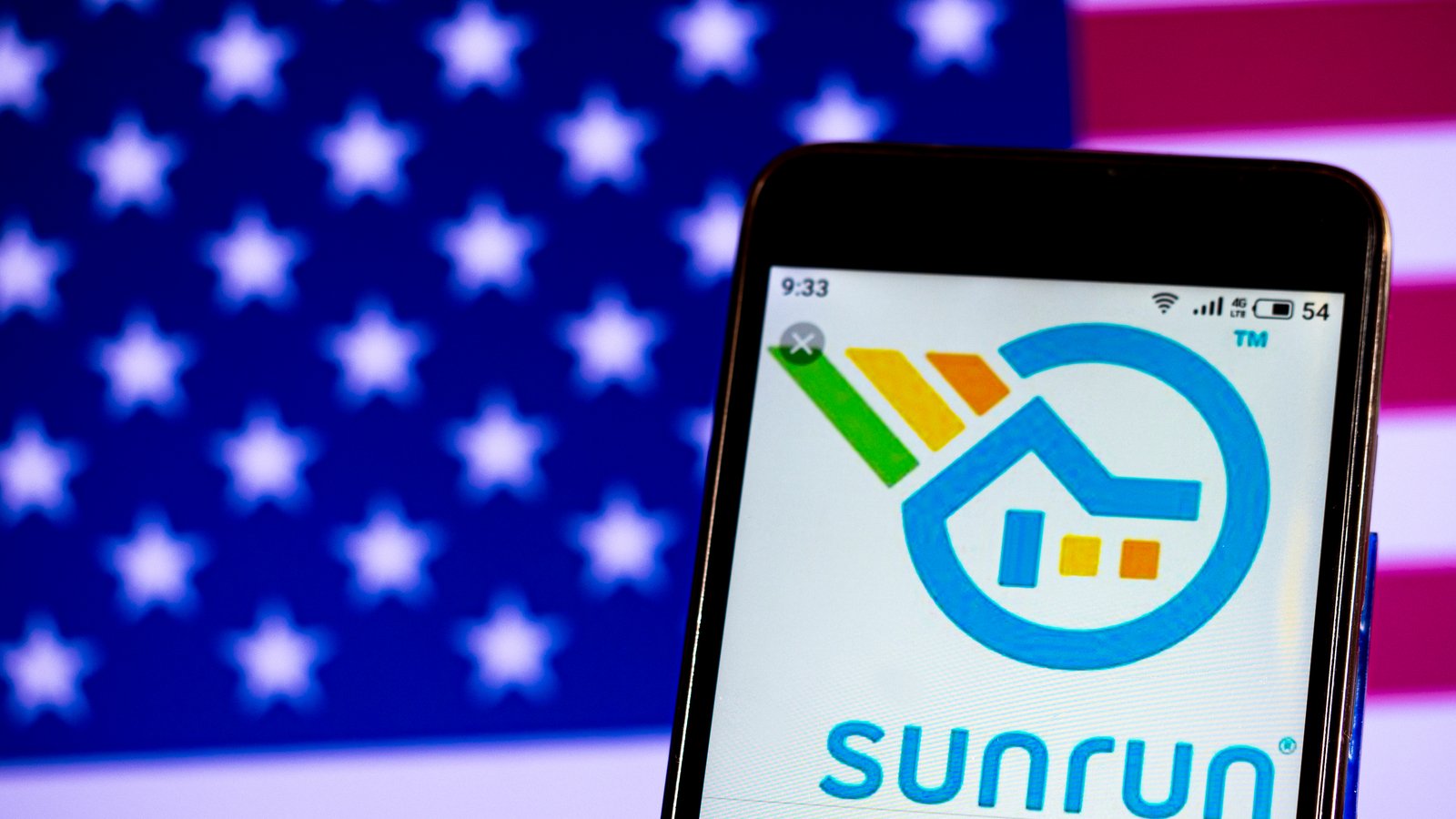When former Vice President Joe Biden announced his $2 trillion climate plan, investors immediately began pouring their money into solar companies like Sunrun (NASDAQ:RUN). Between this and its recent merger with rival Vivint, RUN stock has risen more than 200% since Biden cinched the Democratic nomination back in June.

Investors will undoubtedly continue pouring money into the newly combined firm, the largest pure-play solar company now on the market. But while “hot money” will push up the company’s stock price in the short run, it would take a 5x to 8x gain for Sunrun to refinance its terrible debts. And unless that happens, investors will eventually realize that Sunrun (despite its name) isn’t a solar company. Instead, it’s a financing one, specializing in leasing solar panels back to customers at a loss.
With Tesla (NASDAQ:TSLA) elbowing its way into the industry, Sunrun’s profitability problems will compound. That’s because, no matter how much you scale, you can’t ever become profitable by selling $1 bills for 90 cents.
RUN Stock: A Short-Term Winner
As a high-growth tech analyst, I appreciate the power of investor mania. Some bubbles, such as the 1997 tech boom, allowed companies like Amazon (NASDAQ:AMZN) to raise cheap capital and eventually become world-beating companies.
Today, Sunrun has a chance to become the next Amazon of clean energy. Investor hype over alternative energy stocks, combined with a catalyst from the White House, will propel the stock higher in the short run. If this lasts long enough, Sunrun could issue new shares, wiping out $3.1 billion of long-term debts (net of deferred revenues), and potentially show some minor profits. Its merger with Vivint may consolidate the market far enough as well to boost nominal profits. That would send the stock even higher, creating a virtuous feedback loop.
Once the Biden-driven solar mania begins to cool, however, investors will quickly realize that residential solar power has been a terrible business from an economic standpoint — witness the epic collapse of SunEdison in 2016. And unless Sunrun weans itself off its money-losing financing business, it will head in the same direction too.
Residential solar doesn’t profit from consumer demand. Instead, it’s far more of a financing operation like GE Capital or Ford Capital, which rely on cheap capital to make ends meet. That means, no matter how efficient solar panels become, Sunrun won’t receive the benefits.
Sunrun: A Financial Sinkhole
Sunrun’s core offering involves installing “beautiful, money-saving solar panels on your roof for as little as zero dollars upfront. Z-E-R-O,” according to the company’s website. The company then leases back the rights for the power (or to sell it off) for a flat fee, typically on 20-year terms. From a financial standpoint, that means borrowing the $15,000 to $29,000 it takes to outfit a customer’s roof, repaying that loan with customer rents, and keeping the profits for themselves.
To report its profits, the company uses an unorthodox metric known as “unlevered NPV,” the net present value of a customer that’s the difference between “Project Value” and “Creation Costs” (yet more unconventional measures). In Q2, that came to 51 cents per watt, down from $1.11 the year before. In other words, Sunrun’s management would like you to believe the company earns 51 cents for every watt produced.
There’s just one problem: “unlevered NPV” appears to ignore reality altogether.
Among other issues, the measure completely ignores loan interest charges, uses a 6% discount rate, and doesn’t seem to account for future replacement costs of aging solar panels.
A reality check shows a company that’s spent $5.2 billion in capital expenditure since 2013 to install 1,987 megawatts of power, but generated only $107.5 million in gross income from customer agreements and incentives in 2019. Even before considering $275 million in sales and marketing costs, that’s a gross return of just 2%. It’s an unsustainable business model at current rates.
So how much is left over for Sunrun investors? A bankruptcy court might be a better judge of that answer.
Why Can’t Sunrun Make a Profit?
The residential solar industry’s original sin was to compete on price. The only way to switch customers over, they reasoned, was to undercut public utilities.
There’s one problem: public utilities are frighteningly efficient compared to piece-meal solar panels on single-family residences. Even when adding 36% in delivery costs for public utilities, it’s hard to compete against 1) massive solar farms that are, 2) built in the best locations and 3) outfitted with tracking systems to always face panels towards the sun.
Tesla’s push into the industry will also ensure the Sunrun/Vivint merger won’t push up rates. The carmaker, which bought SolarCity in 2016, promises a cost of $1.89/W before incentives. That’s almost half the cost of Sunrun’s technology.
Can Sunrun Succeed?
The company must perform three miracles to succeed. First, management needs to stop using unconventional metrics. It’s not fooling anyone (except maybe themselves). Investors have already sold short 18 million RUN shares, or around 20% of the company’s free float.
Second, Sunrun should shed its financing operation and become a pure-play solar developer/reseller. In other words, become more like Ford (NYSE:F) (which makes and sells automobiles) and less like Ford Credit (the branch that deals with vehicle-related financing and leasing). Sunrun already generates around 55% of its revenue from product sales, so why keep pumping money into a cash-burning financing operation?
Finally, Sunrun MUST slim down where it matters. In 2019, the company spent 46% of its revenue on marketing and overhead costs (SG&A). That’s as bloated as companies get. That’s even true in the high-growth world: Tesla spent just 11% on SG&A in 2019, choosing instead to channel a far higher portion than Sunrun into R&D.
If Sunrun can achieve these three things, the company could skyrocket. The Energy Information Administration predicts renewables will overtake natural gas as the single largest energy source by 2042, with solar making up almost half. And in the short term, RUN stock will benefit from a green-focused Biden presidency.
But to become the next Amazon of solar energy, Sunrun’s management needs to start thinking like investors and shed their unprofitable businesses. And they had better work quickly. After all, Tesla is coming.
On the date of publication, Tom Yeung did not have (either directly or indirectly) any positions in the securities mentioned in this article.
Tom Yeung, CFA, is a registered investment advisor on a mission to bring simplicity to the world of investing.
